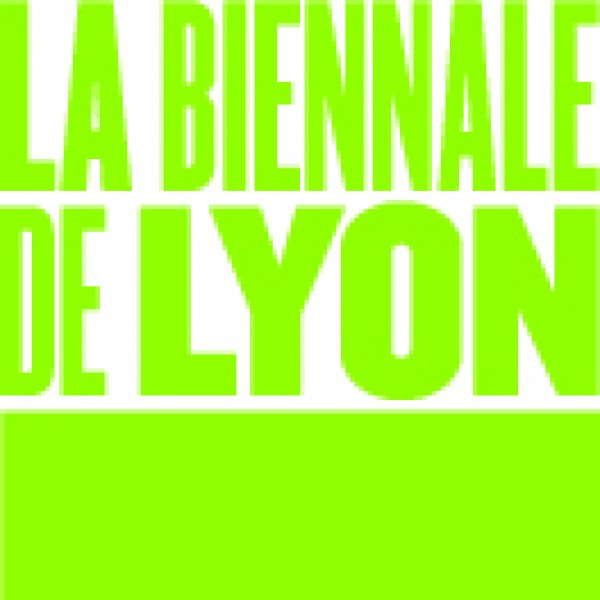Descripción de la Exposición
The 16th Lyon Biennale announces curatorial framework, participating artists, and institutional partners.
Curatorial framework
Curated by Sam Bardaouil and Till Fellrath, the 16th Lyon Biennale manifesto of fragility proceeds with the announcement of its curatorial framework, participating artists and institutional partners that will come together to realize the Biennale’s multifaceted exhibitions and programs. Seeking opportunities for dialogue across historical, geographical and socio-political distances, manifesto of fragility will facilitate innovative, multidirectional possibilities for creative cooperation. These collaborative processes, which will already begin to unfold in the months leading up to the Biennale’s September 2022 opening in Lyon, will yield 50 new artistic commissions and productions within a decentralized program that will materialize across numerous sites. Many works will be adapted to the unique architectural contexts in which they will be shown, including several large-scale immersive installations. The Biennale will expand beyond its customary venues in Lyon into locations throughout the city in order to welcome the participation of the broadest possible public.
manifesto of fragility is structured along two distinct axes that function as complimentary conduits for the Biennale’s consideration of fragility: A horizontal, geographical line carries the contributions of 87 contemporary artists from 39 countries engaging with the topic of fragility in a wide range of artistic practices. A vertical, temporal line will deliver more than 100 historical artworks and objects spanning two millennia on loan from several diverse collections in Lyon and abroad. The Biennale posits a point of intersection between the two axes to initiate a focused exploration of fragility within the context of the dazzling yet tumultuous 1960s era of Beirut’s so-called Golden Age, featuring 230 artworks by 34 artists and more than 300 archival documents from nearly 40 collections worldwide. This section of the biennale acquires added poignance in Lyon, given the city’s historical entanglements with Beirut centred around the 19th century silk trade, and the establishment of the French Mandate in 1920.
Artists
The artists taking part in the 16th Lyon Biennale bring diverse approaches to the focal theme of fragility that represent varied understandings of our current state of global uncertainty. The Biennale appeals to a broad coalition of international artists to share in building a nuanced patchwork of narratives illuminating moments of resilience in the face of social, political and environmental upheaval The artists gathered around the Biennale embody various faces of fragility, some in the issues they tackle, and others in the materials they use. What their works have in common is the potential to inform our thinking about generative paths of resistance.
manifesto of fragility emphasizes the importance of individual encounters in gaining insight into the circumstances that shape our contemporary realities. Many of the artists share an awareness of the architectural and historical specificities of their surroundings. This sensitivity allows for rigorous points of contact between coexisting identities, communities and histories that can activate dynamic societal changes. Seeking collaborative actions that can bridge divides and build communal responses to global conditions, the 16th Lyon Biennale engages an expansive network of artists practicing in cities across the globe, including: Abu Dhabi, Amsterdam, Basel, Beirut, Berlin, Bogota, Brussels, Cape Town, Casablanca, Copenhagen, Cork, Dhaka, Dubai, Geneva, Ghent, Guadalajara, Helsinki, Jeddah, Lagos, Lisbon, London, Los Angeles, Lyon, Madrid, Marrakesh, Marseille, New York, Oslo, Paris, Riga, Riyadh, San Francisco, São Paulo, Seoul, Shanghai, Stockholm, Strasbourg, Toulon, Vienna and Warsaw.
Institutional partners
The 16th Lyon Biennale’s partnerships will create opportunities for multidimensional perspectives on institutional practices. Broadening the conversation to include a heterogeneous mix of institutions that often operate in similar yet distinct fields, the Biennale addresses a number of pressing issues related to the role of cultural institutions in an increasingly fragile world. By connecting institutions that act as custodians of artworks from different periods and geographies, the Biennale triggers imaginative resonances between the works of the participating contemporary artists and historical works, objects and artifacts. With expanded points of reference and additional resources for the creation of new works, these co-operations will engender more intricately and tightly interwoven networks of communication and support. This will benefit artists in their search for new, expansive terrains of inquiry.
The 16th Lyon Biennale will act as a nexus for the diverse publics of its different institutional partners. By appealing to a wide range of cultural interests, the Biennale will bring various audiences into dialogue with artistic positions that they might be less acquainted with. Additionally, the Biennale’s off-site venues embody unique architectural styles from different eras in Lyon’s history, creating compelling synchronicities between the artworks on display and the architectural and historical contexts. These ancillary sites generate dynamic possibilities for new encounters.
Through a combination of global, historical and contemporary perspectives, the assembled artists, institutions, and publics join the 16th Lyon Biennale to propose a manifesto of fragility that repositions vulnerability at the heart of a comprehensive global panorama of human perseverance.
Participating artists
Mohamad Abdouni, Gabriel Abrantes, Amina Agueznay, Remie Akl, Julio Anaya Cabanding, Giulia Andreani, Mali Arun, Dana Awartani, Clemens Behr, Nina Beier, Ailbhe Ní Bhriain, Lucile Boiron, Phoebe Boswell, Sarah Brahim, Leyla Cárdenas, Julian Charrière, Jean Claracq, Clément Cogitore, Nicolas Daubanes, Jose Dávila, Buck Ellison, Eva Fàbregas, Mohammed Al Faraj, Philipp Fleischmann, Léo Fourdrinier, Chafa Ghaddar, Olivier Goethals, Pedro Gómez-Egaña, Marta Górnicka, Nicki Green, Joana Hadjitomas & Khalil Joreige, Klára Hosnedlová, Nadia Kaabi-Linke, Néstor Jiménez, Annika Kahrs, Özgür Kar, Mohammed Kazem, kennedy+swan, Michelle & Noel Keserwany, Tarik Kiswanson, Nadine Labaki and Khaled Mouzanar, Hashel Al Lamki, Richard Learoyd, Hannah Levy, Randa Maroufi, Lucy McRae, Jesse Mockrin, Filwa Nazer, Eva Nielsen, Toyin Ojih Odutola, Hans Op de Beeck, Organon Art Cie, Daniel Otero Torres, Abdullah Al Othman, Daniel De Paula, Aurélie Pétrel, Sarah del Pino, Joanna Piotrowska, Christina Quarles, Omar Rajeh and Mia Habis, Erin M. Riley, Sara Sadik, Cemile Sahin, Ezster Salamon with the Jeune Ballet of the CNSMD Lyon (under the artistic direction of Kylie Walters), Ugo Schiavi, Markus Schinwald, Sylvie Selig, Seher Shah, Jeremy Shaw, Muhannad Shono, Taryn Simon, Kim Simonsson, Valeska Soares, Studio Safar, Young-jun Tak, Lucia Tallova, Philipp Timischl, Salman Toor, Evita Vasiljeva, Puck Verkade, WangShui, Munem Wasif, James Webb, Hannah Weinberger, Raed Yassin, Zhang Ruyi, Zhang Yunyao
In addition to the participating contemporary artists, the Biennale will feature 34 artists who were living and working in Beirut in the 1960s as part of the Beirut focus, as well as works by more than fifty artists dating from antiquity until the 19th century presented across several of the Biennale venues.
Institutional partners
Art Jameel (Dubai), Atassi Foundation (Dubai), Barjeel Art Foundation (Sharjah), Centre culturel suisse (Paris), Centre Pompidou – Musée national d’art moderne (Paris), CinéFabrique – École nationale supérieure de cinéma (Lyon), CNSMD – Conservatoire national supérieur musique et danse de Lyon (Lyon), Dalloul Art Foundation (Beirut), Diriyah Biennale Foundation (Riyadh), Gropius Bau (Berlin), Institut du Monde Arabe (Paris), KA Modern and Contemporary Art Space (Beirut), Louvre Abu Dhabi (Abu Dhabi), Lugdunum Musée et théâtres romains (Lyon), Mathaf: Arab Museum of Modern Art (Doha), MACAM: Modern and Contemporary Art Museum (Byblos), Musée des Beaux-Arts de Lyon (Lyon), Musée des Confluences (Lyon), Musée d'Art Contemporain Africain Al Maaden (Marrakech), Musée d’Art Religieux de Fourvière (Lyon), Musées Gadagne (Lyon), Musée des Hospices Civils de Lyon (Lyon), Musée municipal Paul Dini (Villefranche-sur-Saône), Musée des Tissus et des Arts décoratifs (Lyon), Opéra National de Lyon (Lyon), Parc de la Tête d’Or (Lyon), Saradar Collection (Beirut), Staatliche Kunstsammlungen Dresden (Dresden), Sursock Museum (Beirut), Tate Modern (London), The British Museum (London), The Metropolitan Museum of Art (New York), URDLA (Villeurbanne)

Exposición. 14 sep de 2022 - 31 dic de 2022 / Varios espacios de Lyon / Lyon, Rhone-Alpes, Francia

Exposición. 14 sep de 2022 - 31 dic de 2022 / Varios espacios de Lyon / Lyon, Rhone-Alpes, Francia

Exposición. 14 sep de 2022 - 31 dic de 2022 / Varios espacios de Lyon / Lyon, Rhone-Alpes, Francia
Ver los 9 eventos relacionados

Exposición. 16 abr de 2025 - 11 may de 2025 / Centro Botín / Santander, Cantabria, España

Formación. 08 may de 2025 - 17 may de 2025 / Museo Nacional Centro de Arte Reina Sofía (MNCARS) / Madrid, España